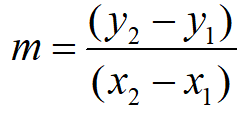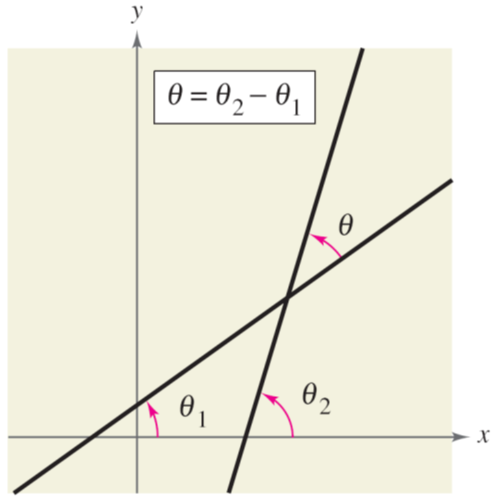The slant or slope between any two points on a straight line is always equal. A line on the Cartesian plane can be described by a linear equation. If ![]() and two points
and two points ![]() exist on a line then the slope of the line can be written as:
exist on a line then the slope of the line can be written as:

A line has a +ve slope if it is going uphill from left to right. A line has a -ve slope if it is going downhill from left to right.
Consider the following graph to calculate the slope

Start with the lower point and calculate the rise and run to get to the other point. Notice the slope on the graph above is positive and the line is increasing.
$\frac{rise}{run}=\frac{3}{6}=\frac{1}{2}$
Consider another example: Find the slope of the line that passes through the points (-2, -2) and (4, 1).

y2 is the y coordinate of the 2nd ordered pair (y2 = 1) and y1 is the y coordinate of the 1st ordered pair (y1 = -2)

All vertical lines have an undefined slope where x is the equation of the line. All horizontal have 0 as the slope where y is the equation of the line. Two lines with the same slope are parallel. Two parallel lines have the same slope.
When neither line is vertical, the slopes of perpendicular lines are negative reciprocals. This means that if the product of the slopes of two lines is -1 then the lines are perpendicular to each other.
![]()
Two distinct lines in a plane can either be parallel or intersecting with each other. If they intersect and are non-perpendicular, then their intersection point forms two pairs of opposite angles. One pair is acute while the other pair is obtuse. The smallest angle out of the two cases is called the angle between the two lines.
As shown in the figure below, the inclinations of the two lines can be used to find the angle between the two lines.


You can use the formula for the tangent of the difference of two angles to obtain the formula for the angle between two lines.
![]()

When slopes for two non-perpendicular lines is given, m1 and m2, the angle between the two lines are:
